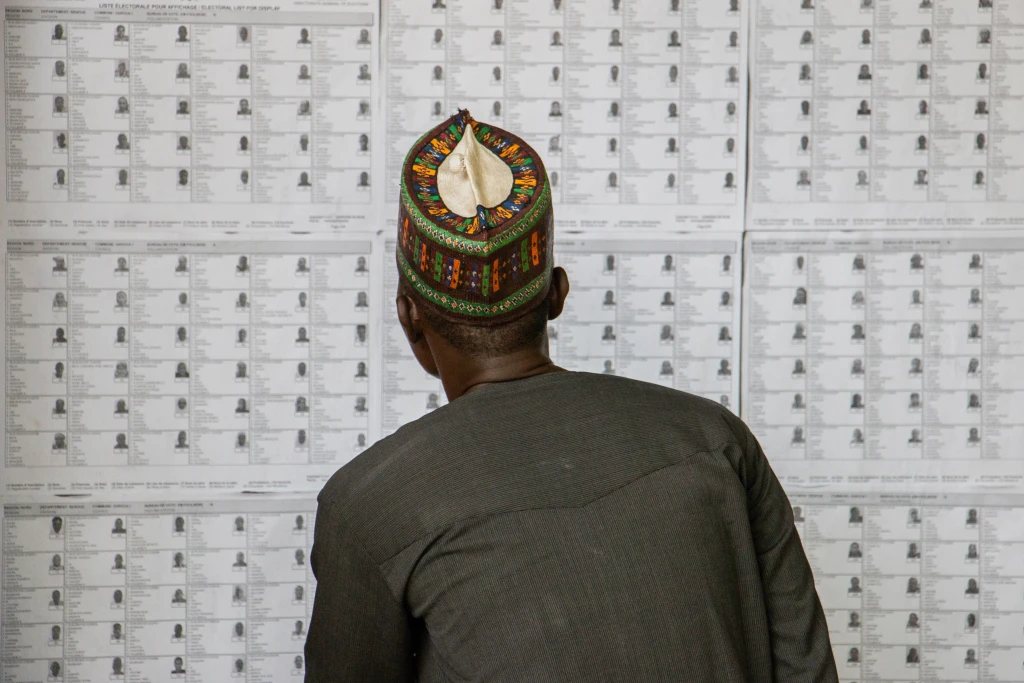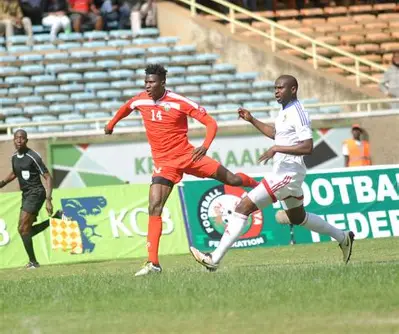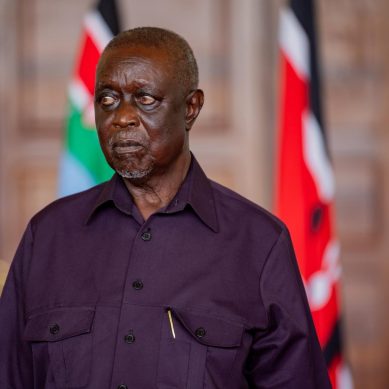
This time round I want to write about academic writing, public writing and public action writing. I believe I am well-positioned to write about these three types of writing because I have been involved in all in my academic and public life.
Academic writing
In academic writing is an argument, academic writing is an analysis, involves picking and limiting a writing topic, has three main characteristics:
- Clear evidence in writing that the writer(s) have been persistent, open-minded and disciplined in study.
- The dominance of reason over emotions or sensual perception.
- An imagined reader who is coolly rational, reading for information and intending to formulate a reasoned response. Success with academic writing depends upon how well one understands what one is doing as one writes and then how one approach the writing task (Lennie Irvin, 2010).
Lennie Irvin (2010) exposes common myths of writing. These myths include that writing is simply a trait that cannot be improved. He explains by stating if one wishes to improve their writing skills they must think about the way they present an idea rather than fretting about the grammar. He also clarifies terms such as analyse and argument.
Irvin’s 7 myths of academic writing are:
Myth #1: The paint by numbers” myth
Myth #2: Writers only start writing when they have everything figured out
Myth #3: Perfect first drafts
Myth #4: Some got it; I don’t – the genius fallacy
Myth #5: Good grammar is good writing
Myth #6: The five paragraph essay
Myth #7: Never use “I”
Academic writing involves peer reviews. It detests plagiarism and allows paraphrasing. Citing the Merriam-Webster Online Dictionary, Sam Georgi (2016) says that plagiarism means:
- To steal and pass off ideas or words of another person as one’s own
- Using another’s production without acknowledging the source.
- To commit literally theft
- To present as new and original an idea or product from another source
Sam George gives the different types of plagiarism that academic writers should avoid, namely:
- The clone: direct copy and paste; submitting someone else’s work word for word as your own
- The mashup: some of the work is original or properly cited but other parts are stolen and sources are not cited or quoted.
- Find and replace: parts of the text are copied from the Internet, some words and phrases are changed to make the work sound different, but when read it remains very close to the original author’s submission
- The recycler: the work of someone else is presented from one group to another without change, even for years or decades. Old work is reused as new
- The 404 Error: all copied text is cited., but some citations are inaccurate or leading to non-existent sources
According to Sam George (2016), to avoid plagiarism we should cite our sources correctly and paraphrase properly. However, he does not forget to bring our attention to both deliberate and accidental plagiarism. He tells us that deliberate plagiarisms rewriting from books and articles, copying and pasting from web pages and online sources to create patchwork writing, and buying, downloading and borrowing a paper. He also tells us that accidental plagiarism is not knowing when and how to cite, not knowing how to paraphrase or summarise, not knowing what common knowledge is and recycling and old paper.
Public writing
“Public writing” refers to any writing intended for a broad audience outside of a specialised field, typically aiming to inform, persuade or create change by communicating complex ideas in an accessible way through various mediums like articles, blog posts, opinion pieces, letters to the editor, or social media posts; essentially writing with a public purpose to engage with a wider community beyond academia or a specific professional circle (AI)..
One may say that public writing is writing for the public to articulate and clarify complex issues for different publics, which is normally not done by academics since these tend to write for themselves and to restricted audiences of certain academic interest.
Jerry Plotrick of the University of Toronto’s writing advice has written a good undated article under the title ‘Writing for the Public’. He writes thus: “Public writing is a broad category that includes a wide variety of genres: opinion pieces, letters to the editor, blogs, newspaper reports, magazine features, letters to elected officials, memoirs, obituaries, and much more. All of these genres share common features. In particular, public writing aims to be accessible. It is not for specialists. And public writing usually aims to be relevant, even when it engages with the past. Still, each of the different genres has its own conventions”.
He advises that when writing for the public we have to know our audience, provide context and be concrete, mind our language, do research if necessary but don’t write research papers as if we are academics. He emphasises that we must be prepared to set aside many of the conventions we have learned about academic writing. Although he states that references are a feature of academic writing that should not appear in public writing, I have found putting some “further reading” at the end of each of my public articles because I am writing in a less free social political environment than Jerry Plotrick’s Canada to show that my thinking is connected to the minds of other thinkers. It would be easy for power to pin me down as “undermining it”.
It is easy to agree with Jerry that the ability to convey complex ideas and avoid the specialised language of the academy is a mark of the finest public writing.
Looser (2025) has recently written about the necessity of public writing. He states that public writing is a practice that academic humanists should regularly engage in and a mode we must be willing to teach in order to win back public trust in higher education and to reinvigorate humanities research at a time of precariousness. However, this is also true of knowledge workers in the social science and the natural sciences. We could then have public humanities, public social science and public natural science. I am from the natural sciences, since I joined academics in 1991 at Makerere University, I have actually engaged in public natural science writing. If universities embrace the integrative learning sciences of interdisciplinarity, crossdisciplinarity, transdisciplinarity and extradisciplinarity (nondisciplinarity, then it would be possible to integrate public humanities, public social science and public natural science to reach out to wider audiences beyond the Ivory Tower.
Public writing is definitely necessary for retired academics and intellectuals to keep their minds productive beyond the Ivory Tower. Many academics are never heard of again once they leave the ivory tower because they only know academic writing, which is unnecessary beyond the Ivory Tower. To remain productive outside the Ivory Tower, they should engage in public writing. I have found it particularly useful since I retired from academic life in 2009. I have produced numerous articles on a diversity of genres. In other words, I converted myself into a multigenre writer to remain productive and influential beyond the Ivory Tower.
A multi-genre author is a writer who produces work across a variety of literary genres rather than specialising in just one. Multi-genre authors embrace the challenge of mastering the distinct characteristics and conventions of each genre they explore, often bringing a unique blend of perspectives and creativity to their work. Benefits of being a multigenre writer include creative flexibility and growth, broader audience reach and marketability and adaptability (Nicholas Yeager, 2024).
Simon Van Booy (2020) wrote thus, “Writing in different genres often means having a slightly different process for each style. This, in my opinion, is what makes it possible on a final note, be sure to give up expectations, for the goals of the truly great writer are not publishing and fame, but authenticity and truth”.
Daily Express of Uganda put me as the second most influential opinion writer in Uganda in 2023. In the same year, Tell Media of Kenya put me as the most influential multigenre writer in East Africa. I would not have achieved this status if I remained with an academic mind-set outside the ivory tower. I have been creatively flexible, reached a broader global audience and marketed myself adaptively. Therefore, it has been a good transitioning for me from academic writing to public writing.
My articles have been published in a diversity of media – print and non-print. I freed myself from the restrictive requirement to get academic journals to publish my ideas. Therefore, 15 years since I retired from active academic life, I have widened my audience far and wide. However, to keep myself connected to the academic world, I have published my thoughts on academic social media, principally Researchgate.net and Academia.edu.
Recently Academia.edu informed me that well over 6,000 academics distributed over all the continents have cited my works. If I had quit writing because I was no longer in an academic institution where the only valued writing is academic writing, I would not have achieved this feat.
Public action writing
There is, also public action writing (PAW), also called social action writing (SAW). According to Mark Latta, 2022) “Public action writing isn’t a category defined by the genre features of the writing produced. Public action writing can take the familiar forms of essays, poetry, interviews and reflections and can be packaged in a variety of media.
Instead, public action writing is more concerned with the intent of the writing and the process of crafting it. For intent, public action writing unapologetically explores problems – wicked problems, problems that matter – and attempts to impact these problems, usually by implying or explicitly suggesting a change in the conditions or outcomes of these problems. The goal is to alleviate problems so that they no longer exist or (more likely) that they harm fewer people. Public action writing is a form of harm reduction. In this way, public action writing is similar to public writing”.
According to Mark Latta (2022) “public action writing is created by being involved with the people facing a problem; public action writing picks a side; wants to tell stories about those impacted by problems; tell them in a way that those people want them told; asks us to see the world through the eyes of those facing the problems we are writing about; and asks the author to speak from the perspective of the other, to convince the reader that these experiences matter and that something should be done. The author and subject form relationships and create learning and living communities to do this”.
In other words, public action writing is about reducing harm and it is also about forming relationships and using writing as a way to generate and sustain new relationships. It can take on many different creative forms, but all forms of public action writing tend to have the following features: writing produced with the intent of social change; through a process of developing authentic relationships and to tell the stories of others while refusing to reduce people down the damage they have experienced (Mark Latta (2022).
In conclusion academics can greatly enhance their visibility, marketability and influence if they break the ivory tower walls and migrate into public publishing and public action publishing. Besides, the humanities, social science and natural science could separately or collectively undertake to establish a programme on public publishing and public action publishing at all levels of the university curriculum.
Public publishing and public action publishing can keep retired academics still visible and influential beyond the walls of the ivory tower. No. Academics should not disappear into oblivion once they walk out of the ivory tower. There so many challenges, problems and issues of human import they could write on and publish for public consumption and keep themselves afloat.
For God and my country.
- A Tell report / By Oweyegha-Afunaduula / Environmental Historian and Conservationist Centre for Critical Thinking and Alternative Analysis (CCTAA), Seeta, Mukono, Uganda.
About the Centre for Critical Thinking and Alternative Analysis (CCTAA)
The CCTAA was innovated by Hyuha Mukwanason, Oweyegha-Afunaduula and Mahir Balunywa in 2019 to the rising decline in the capacity of graduates in Uganda and beyond to engage in critical thinking and reason coherently besides excellence in academics and academic production. The three scholars were convinced that after academic achievement the world outside the ivory tower needed graduates that can think critically and reason coherently towards making society and the environment better for human gratification. They reasoned between themselves and reached the conclusion that disciplinary education did not only narrow the thinking and reasoning of those exposed to it but restricted the opportunity to excel in critical thinking and reasoning, which are the ultimate aim of education. They were dismayed by the truism that the products of disciplinary education find it difficult to tick outside the boundaries of their disciplines; that when they provide solutions to problems that do not recognise the artificial boundaries between knowledges, their solutions become the new problems. They decided that the answer was a new and different medium of learning and innovating, which they characterised as “The Centre for Critical Thinking and Alternative Analysis” (CCTAA).
Further reading
Jerry Plotnick (?). Writing for the Public. University of Toronto. Writing Advice, https://advice.writing.utoronto.ca/types-of-writing/public-writing/ Visited on 25 February 2025 at 19:44 pm EAT.
Lennie L. Irvin (2010). What is Academic Writing? https://wac.colostate.edu/books/writingspaces1/irvin–what-is-academic-writing.pdf Visited on 25 February 2025 at 17:13 pm EAT.
Looser, Devoney (2025). The Necessity of Public Writing. Public Humanities. 2025;1:e24. doi:10.1017/pub.2024.9 https://www.cambridge.org/core/journals/public-humanities/article/necessity-of-public-writing/A88EAF9986591A29407F367837FB9E61 Visited on 25 February 2025 at 19:48 pm EAT.
Mark Latta (2022). What is Public Action Writing? Medium, August 16 2022. https://medium.com/northwest-learning-journey/what-is-public-action-writing-a6c3af3b255d Visited on 25 February 2025 at 20:08 pm EAT.
Nicholas Yeager (2024). Writing with Transitions and Characters: How to Write Like a Pro. Medium, January 15 2024. https://medium.com/@nicholasyeager2020/writing-with-transitions-and-characters-a86ae6801aaf Visited on 26 February 2025 at 11:55 am EAT.
Nicholas Yeagar (2024). What is a Multigenre Author and Writer? Medium, Feb. 28, 2020. https://www.writersdigest.com/be-inspired/becoming-a-multigenre-writing-master Visited on 26 February 2025 at 11:46 am EAT.
Oweyegha-Afunaduula, Fred Charles, Isaac Afunaduula and Balunywa Mahir (2017). Transboundary Water Governance for Inclusive Development and Environmental Sustainability in the Nile Basin. Researchgate, November 2017 https://www.researchgate.net/profile/Oweyegha-Afunaduula-Charles Visited on 26 February 2025 at 13:07 pm EAT.
Oweyegha-Afunaduula (2024). Uniting climate justice, environmental justice, environmental cooperation, environmental peace and environmental diplomacy in environmental security building. MUWADO, 5 November 2024. https://muwado.com/uniting-climate-justice-environmental-justice-environmental-cooperation-environmental-peace-and-environmental-diplomacy-in-environmental-security-building/?v=2a0617accf8b Visited on 26 February 2025 at 12:59 pm EAT.
Sam Georgi (2016). Paraphrasing and Plagiarism. SlideShare, April 3 2016. https://www.slideshare.net/sr georgi/paraphrasing-plagiarism Visited at 18: 27 pm EAT.
Simon Van Booy (2020). Becoming a Multigenre Writing Master. Writer’s Digest,.







